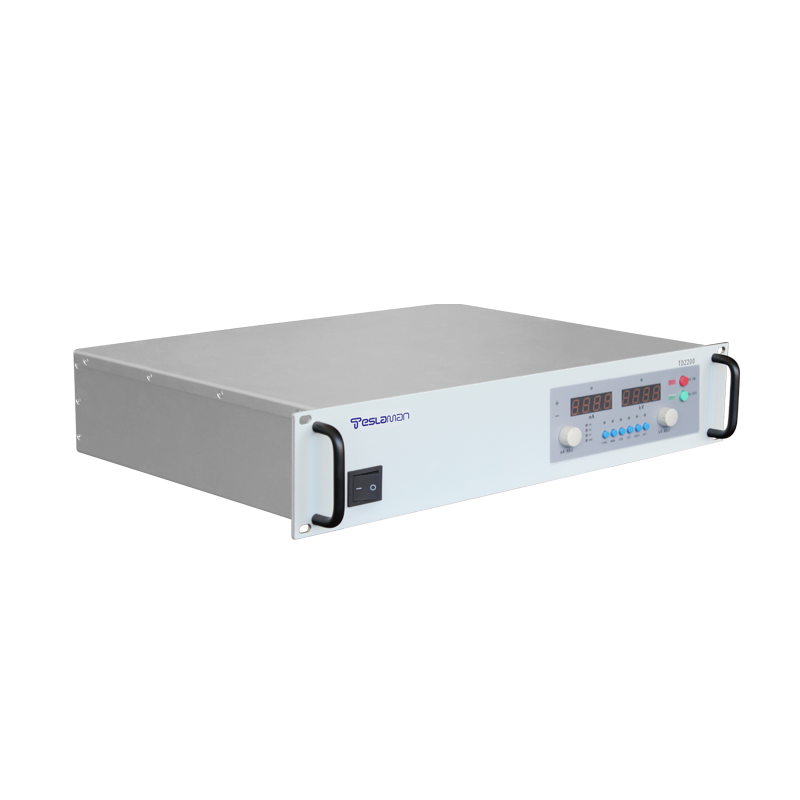Precision Voltage Adjustment in DC Adjustable High-Voltage Power Supplies: Principles, Challenges, and Applications
In modern industrial and scientific research, precision voltage adjustment in DC adjustable high-voltage power supplies has become a core technology for precision equipment testing, semiconductor manufacturing, medical instruments, and beyond. Its value lies in achieving millivolt or even microvolt-level voltage control to meet stringent stability requirements in high-sensitivity applications.
1. Technical Principles of Precision Voltage Adjustment
1. Feedback Control Mechanism:
Precision voltage adjustment relies on a closed-loop feedback system. By monitoring the output voltage in real time and comparing it to the set value, an error signal is generated. This signal is dynamically processed by a PID (Proportional-Integral-Derivative) algorithm to adjust the duty cycle of switching devices (e.g., PWM technology), enabling rapid convergence of the output voltage. For instance, the PID controller uses integral terms to eliminate steady-state errors and derivative terms to suppress overshoot, maintaining output errors within ±0.01V.
2. Digital Regulation Technology:
Modern power supplies use digital signal processors (DSP) or microcontrollers (MCU) to convert analog voltage regulation into digital control. Users can set target voltages via knobs, buttons, or remote interfaces. The MCU outputs reference signals via high-resolution DACs (digital-to-analog converters) while collecting feedback data through ADCs (analog-to-digital converters), achieving 0.1mV-level resolution.
3. Switching Topology Optimization:
Topologies like Buck-Boost efficiently generate high-voltage DC output from a wide input range. By optimizing high switching frequencies (>20kHz) and low-pass filter designs (LC filters), ripple can be suppressed below 50mV while improving conversion efficiency to over 90%.
2. Key Factors Affecting Voltage Adjustment Accuracy
Temperature Drift: Environmental temperature changes cause parameter shifts in components like Zener diodes and voltage-divider resistors. Solutions include temperature compensation circuits (e.g., NTC thermistors) or digital calibration algorithms.
Load Effect: Sudden load current changes (0A→3A) may induce voltage fluctuations (±0.05V). Countermeasures include adding output capacitors for energy storage and optimizing feedback loop response speed (<10μs).
Line Voltage Drop: Wire resistance between the power supply and load causes voltage drops (ΔV=I·R). Kelvin sensing compensates dynamically via independent sensing wires, while dedicated ICs (e.g., line drop compensators) adjust output in real time.
3. Application Scenarios for High-Precision Voltage Adjustment
1. Semiconductor Testing: Wafer fabrication requires precise bias voltage control (±0.05% accuracy) for etching and deposition processes, where microvolt-level deviations reduce yield.
2. Medical Imaging Equipment: X-ray generators demand stable high-voltage outputs (10–150kV) with ripple <0.1% to ensure image clarity and dose accuracy.
3. Battery Performance Validation: Power battery testing under varied conditions (e.g., -30°C) requires ±5mV accuracy to prevent capacity degradation from overcharge/discharge.
4. Future Development Trends
Multi-Parameter Cooperative Control: Coordinated adjustment of voltage, current, and temperature (e.g., automatic CV/CC switching) enhances adaptability to complex loads.
AI-Driven Predictive Maintenance: Machine learning analyzes historical data to predict component aging (e.g., capacitor ESR increase) and preemptively calibrate accuracy.
Wide-Bandgap Semiconductor Adoption: Silicon carbide (SiC) devices support higher switching frequencies (>100kHz), further reducing ripple and expanding temperature tolerance.
Conclusion
Precision voltage adjustment in DC adjustable high-voltage power supplies exemplifies the convergence of power electronics and digital control. With advancements in high-precision sensing and adaptive algorithms, it will break physical limits in emerging fields like quantum computing and renewable energy, solidifying its role as an indispensable precision energy tool in Industry 4.0.




















